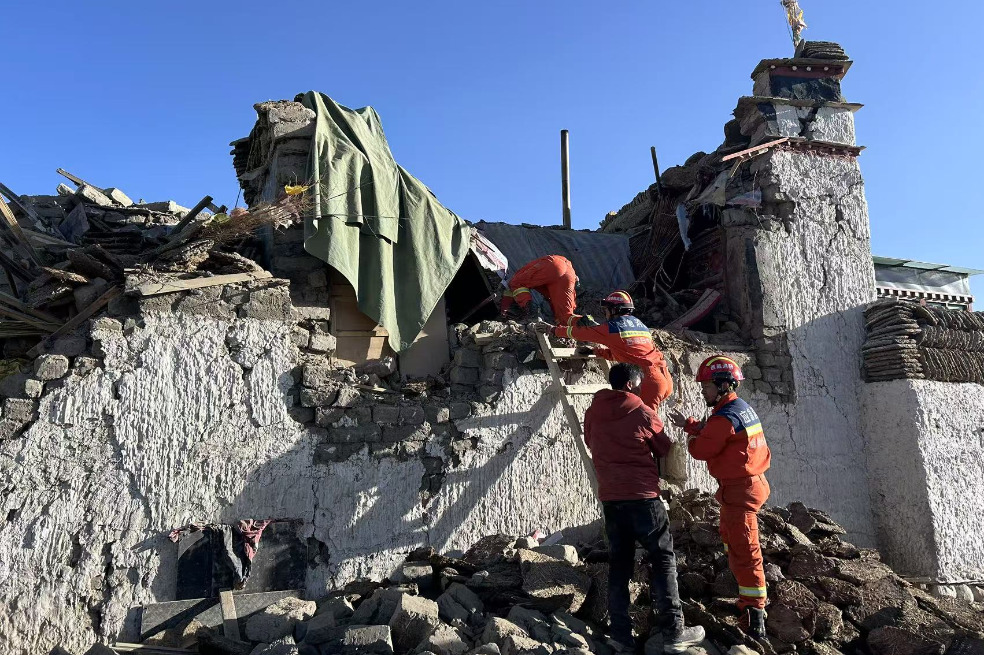Rediscovering Beijing’s Old Summer Palace
By Wang Kaihao | China Daily | Updated: 2017-08-01 07:19
 |
| A stone, carved with Qing Emperor Jiaqing's handwriting, is discovered and displayed at the exhibition hall of the Yuanmingyuan Ruins Park. [Photo by Wang Kaihao/China Daily] |
Two stones with Emperor Jiaqing's calligraphy show renovation on Ruyuan during the Jiaqing reign (1796-1820).
And, Zhang says that the tiles found at the site have reddish marks on them, indicating that they were burned.
"All the tiles we found had cracks," he says.
"These tiles, only used in imperial institutions were of top quality. The cracks prove that they burned for a long time."
Zhang's team is seeking to establish a date of the fire.
"But as of now I can tell you that the fire was set in the late Qing Dynasty," he says.
"So, it is still premature to connect this fire to the looting of 1860."
However, he says that there are no historical records of Ruyuan after Emperor Xianfeng's reign (1851-61) ended. So, this probably means that the garden was destroyed by then, coinciding with the Anglo-French invasion.
Preliminary investigation of the site began in 2012, but the main project was launched in 2016, and covers an area of 3,800 sq m.
Parts of Ruyuan are still buried today as they are beyond the Yuanmingyuan Ruins Park.
"So, it still depends on the urban planning department if they want to expand our excavation site," says Zhang.
"It will cause trouble if we block the artery-Zhongguancun North Avenue-for archaeology."
Zhang says that the designs of Ruyuan show that there was a pedestrian overpass connecting Ruyuan with nearby gardens, and he says that there are possible ruins beneath the Tsinghua University campus, which is across Zhongguancun North Avenue.
"Yuanmingyuan was much bigger than the ruins we see today," he says.
























